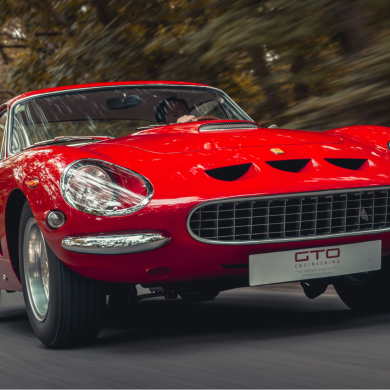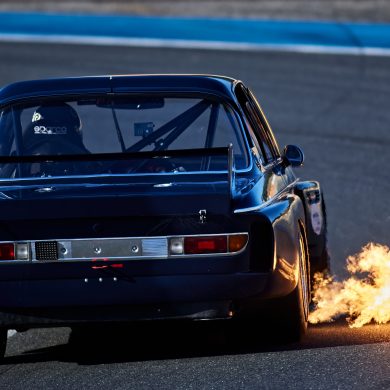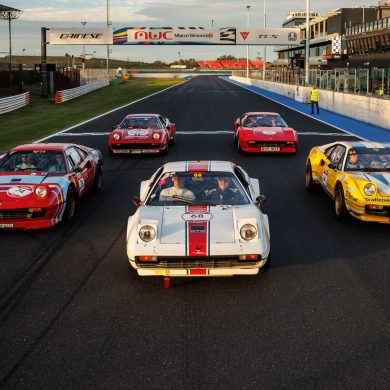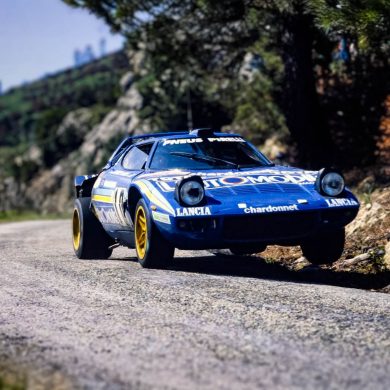Celebrating 55 years of the 1969 European Hill Climb Championship crown, where the Ferrari 212E Montagna finally gave Scuderia Ferrari its first title in this motorsport discipline, Sports Car Digest presents its readers with an in-deep story of this mythical vehicle, in a form of a detailed summary of its development and the complete analysis of the 212E racing record.
In this first part, the reader will be able to see the story of Ferrari’s first steps in the European Hill Climb Championship: starting with the Maranello association with Scuderia Sant’Ambroeus, progressing to the development of the Sport 2000 in 1967, until the emergence of 212E Montagna at the end of 1968. The reader will also be able to see the reports of the first two pre-season events that 212E participated in: the Course de Côte d’Ampus (France) and the Coppa Città di Volterra (Italy)
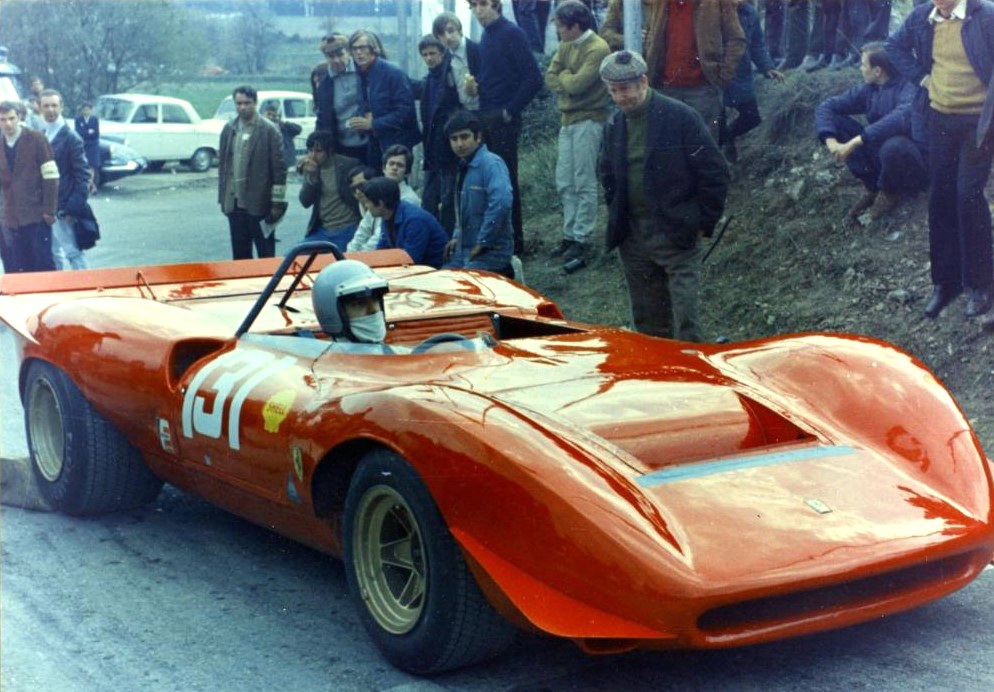
Motorsport in the 1960s can be remembered as the time of great duels and clashes between automakers. Ford versus Ferrari in Le Mans, Lotus versus BRM in F1, Brabham versus Matra in F2, Eagle versus Lola in the Indianapolis and Holden versus Ford in Bathurst. Whenever there was a manufacturer willing to win an event, there was its alter ego to face it, splitting the fans between the two sides of the spectrum. The public was always eager to see these face-to-face confrontations, while the media made the most of these great battles, which took place on the world’s major circuits.
Another battle that could be included in this pool of great confrontations of the 60s and that is perhaps more ignored, was the one that developed between Ferrari and Porsche. Although the two manufacturers staged one of the biggest duels in the history of motorsport in the following decade (in the 1970/71 editions of the World Sports Car Championship), this confrontation had its prologue in the previous decade, when Ferrari decided to officially venture into the European Hill Climb Championship, which, at the time, was one of the most prestigious automobile competitions in the world.
Despite small skirmishes between the two teams throughout much of the 1960s (especially at Le Mans and the Targa Florio), the climax of this battle could have been in 1969, in the final Italian attempt to conquer the mountains of Europe. However, as we know, this battle never took place; but, despite being left aside by its German counterpart, Ferrari would have an opponent to face until it could finally collect the laurels of victory, in late 1969: and its name would be Abarth. It would be a long climb to the top of the mountain, and it would certainly have its challenges and glories.
FERRARI: THE HILLCLIMB CRAZE
Ferrari cars became recurring figures in almost all stages of the European Hill Climb Championship, when this motorsport discipline was officially recognized by the F.I.A. in 1957. Almost all of these entries had taken place through privateers, who had to face, in addition to their counterparts in cars from other brands (such as Alfa-Romeo, Lotus and Maserati), the overwhelming force of factory-backed entries, such as those traditionally made by Porsche and Abarth. There were few great successes achieved by these privateers at this stage, with the majority of victories conquered by Ferraris being restricted to smaller Italian national events, which were not part of the grand European calendar.
However, the rhythm of the game changed for the first time in 1962, when Ludovicco Scarfiotti, aged 28 at the time, was hired by Scuderia Sant’Ambroeus, the traditional Milan-based team. Scarfiotti had been attracting attention for some time now in the Italian automobile scene, achieving excellent results in Touring and Formula Junior races. Observing the potential to be developed in Scarfiotti, the team was quick to offer the driver a contract that involved representing the Scuderia in sports car and hill climb races.
However, while it was known which vehicle would be used for the closed-circuit events (the Alfa Zagato was the standard Sant’Ambroeus car for this discipline), there was still a doubt for the hill climbs. The Alfa was not the ideal car to compete for overall victories, compared to the powerful and feared works Porsche 718 RS, optimized for this type of race.
So, the active Scarfiotti took on his own initiative the mission of finding a more suitable car, with the driver, after many calls, establishing an agreement that would prove extremely beneficial for the driver and for the Sant’Ambroeus. Getting in touch with Eugenio Dragoni, sporting director of Scuderia Ferrari, Scarfiotti proposed that the Maranello team would provide one of the new Dino 196SP to the Italian driver, attesting the intention of beating the invincible Porsche once and for all.
Dragoni held the position of sporting director at Sant’Ambroeus until 1961, when he was hired by Ferrari – therefore, he knew precisely the team’s capacity in relation to the objective set. Dragoni was also well aware of Scarfiotti’s capabilities, following the pilot’s career closely and knowing that the young Scarfiotti was one of the most daring Italian pilots of his time. Despite believing in the viability of the proposal, Dragoni could not make the decision alone, with the final word belonging to Enzo Ferrari himself.
Despite slight resistance at first, the Commendatore was also convinced of the project’s potential, with the contract tying Ferrari, Sant’Ambroeus and Scarfiotti being definitively signed at the beginning of 1962. The conditions of the agreement established that, despite the car being registered under the Sant’Ambroeus banner, the preparation of the car for the hill climb races would be the responsibility of Ferrari itself. Sant’Ambroeus would be just a ‘facade’, as the operation would be actually controlled and run by the Scuderia Ferrari.
This was just a hoax to disguise any problems that might arise; developing this idea in a more tangible way, although the project had good prospects for success, there were no guarantees of it – and Ferrari did not want to risk such a possibility. However, if Scarfiotti managed to beat the Porsches, Ferrari would reap the laurels of victory, as the main responsible behind the success of Sant’Ambroeus. It was a smart move by the team, even more so given the team’s less than optimistic forecasts for 1962.
Despite serious internal unrest at Ferrari during the year, which culminated in strikes and other problems in the management of the sporting department throughout the year, this appeared to have little effect on the division assigned to work alongside Sant’Ambroeus, with Ludovicco Scarfiotti proving to have done a masterstroke when he aligned the trilateral agreement. Of the 7 stages of the European Hill Climb Championship, the Italian would win 4, guaranteeing for the first time a title in the discipline for a Ferrari car.
The Italian had fulfilled what he had promised and, as a reward, Ferrari had decided to extend the agreement with Sant’Ambroeus until 1963. However, the results obtained the following season were very far from those of the magical year of 1962, with Scarfiotti passing the year blank, without achieving a single victory. The agreement was not renewed for 1964, and Sant’Ambroeus decided to continue on its own, this time, with a pot-pourri of vehicles in some selected stages of the championship. Again, the results were disappointing, with Ludovicco winning just one event, at Sierra-Montana-Crans.
Much of the failure was due to Porsche’s quick response. After losing its hegemony in the championship (which had been going on streak since 1958, with consecutive titles in the category), the automaker decided to restructure its project in the category. The new 718/8 W-RS Spyder had regained the Stuttgart manufacturer’s dominance in the mountains of Europe, once again relegating other constructors to a secondary role in the discipline’s races.
However, Scarfiotti would not let himself be beaten that easily, and, again for 1965, the Italian tried to book a deal with Ferrari. After his spent with the Scuderia Sant’Ambroeus, Ludovicco had become an important asset of the Ferrari works-team, being elevated to one of the main drivers in the Sports Car and prototypes department. With all the experience and services provided to the team, Enzo and Dragoni once again gave in to the Italian driver’s request, with the unique 166S/206P being assigned to Scarfiotti during the 1965 Hill Climb Championship.
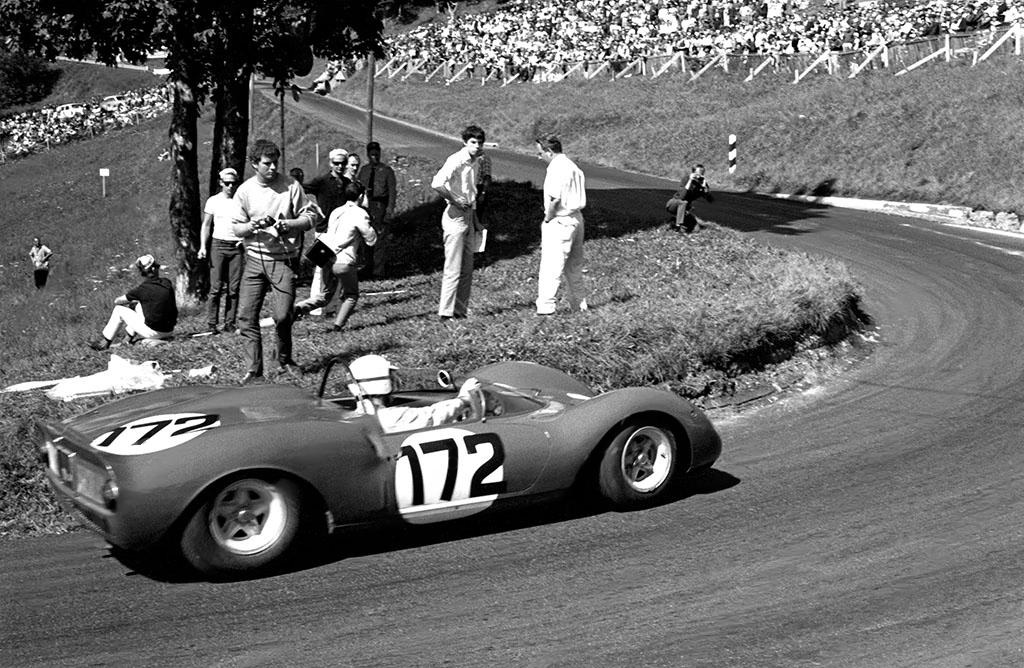
Although Scarfiotti once again lined up with Sant’Ambroeus to compete for the championship, this time, Ferrari’s interference would be less felt. Ferrari’s sporting management was busy with the cars that represented the team in other categories, with the 1965 hill climb project being the last on the Scuderia’s list of concerns. Therefore, Sant’Ambroeus took advantage of a greater degree of freedom than in 1962, subsequently managing to exceed the most optimistic predictions.
After skipping the first two legs of the championship, Scarfiotti demonstrated that he was truly one of the great hill climb drivers in Europe, achieving consecutive victories in Trento-Bondone, Cesana-Sestriere, Schauinsland and Ollon-Villars. The curious case is that in the midst of the winning streak, Ferrari once again became interested in the project, slowly interfering in the Sant’Ambroeus operation. In this way, Scarfiotti accepted a relay agreement, in which for certain European races the 206P was entered by Scuderia Ferrari itself, while in others it was entered by Sant’Ambroeus.
However, this change had little influence on the course of the championship, with the Italian securing his second European Hill Climb Championship title at the end of the season – and the second also for Ferrari. For quantitative purposes, at the conclusion of the championship, the title was awarded to Scarfiotti and Scuderia Sant’Ambroeus, with Ferrari being credited only as the winning manufacturer.
Therefore, despite the 1962 and 1965 titles, it was still felt that Ferrari was missing something; something the carmaker and the team had to prove to themselves. Scuderia Ferrari wanted a title to call its own, without the participation of any external contributors. It was time to leave behind dependence on privateers and “third-party teams”, to follow a unique and exclusive path, built solely by the Scuderia. Thus begins the trajectory of 212E.
FERRARI 212E MONTAGNA: THE BEAST OF MODENA
Given the green light for Scuderia Ferrari to open a department focused purely on hill climbing races, feasibility studies for the construction of a prototype began to be developed at some point in 1966. Despite being initially thought of as a multipurpose vehicle, that could be adapted for some WSC races (especially for twister circuits, such as Nürburgring and Brands Hatch), it didn’t take long for the idea to become unfeasible, with the vehicle proving to be much more amenable to mountains than the traditional racetracks.
Although there is no single formula for building a specific car for hill climbing, given that the layouts of these tracks were as varied as the traditional closed circuits, there were some points of main attention in the project. The car would have to have as its main strengths perfect balance, excellent maneuverability and great acceleration. A high-top speed was not essential, as most hill climb races did not feature long straights.
With the objectives in hand, it was time for the executing phase of the project, which, for many moments, didn’t even seem like it would get off the ground. Due to several budget constraints within Ferrari, which was going through a serious financial crisis in the second half of the 60s, there was not much money available – and the funds that were available were already reserved for maintaining other priority operations at the Scuderia, like the ones related to the WSC and F1. Therefore, it was up to Ferrari’s engineers to make the most of what they had at hand – and this was the biggest asset behind the 212E.
Led by the legendary Ferrari designer Mauro Forghieri, the team of designers assigned to the project had the brilliant idea to cut costs by using one of the 206 SP chassis still in the team’s possession, more specifically, the #66-020. As mentioned previously, the 166/206 family had already proven themselves to be well-suited machines for hill climbing and therefore, seemed a logical starting point for the supposed new vehicle. This allowed the limited resources allocated to the car to be used at other more essential points of the 212E development, in particular, in aerodynamic studies of the new body.
With the chassis in hand, it was up to us to choose which engine would thrust the vehicle – and, again, the solution found was to reuse the resources already available at home. In 1965, Franco Rocchi, one of Ferrari’s atelier engineers, had redesigned Forghieri’s original Type 207 engine, increasing its capacity from 1.489cc to 1.986cc and giving birth to what would become known as the Tipo 231 family of engines. With the increase in capacity, the engine was brought into line with the standards of the 2-liter sports category, a factor that allowed it to be the powerplant chosen to equip all 166S/206P produced (among them, Scarfiotti’s 166P).
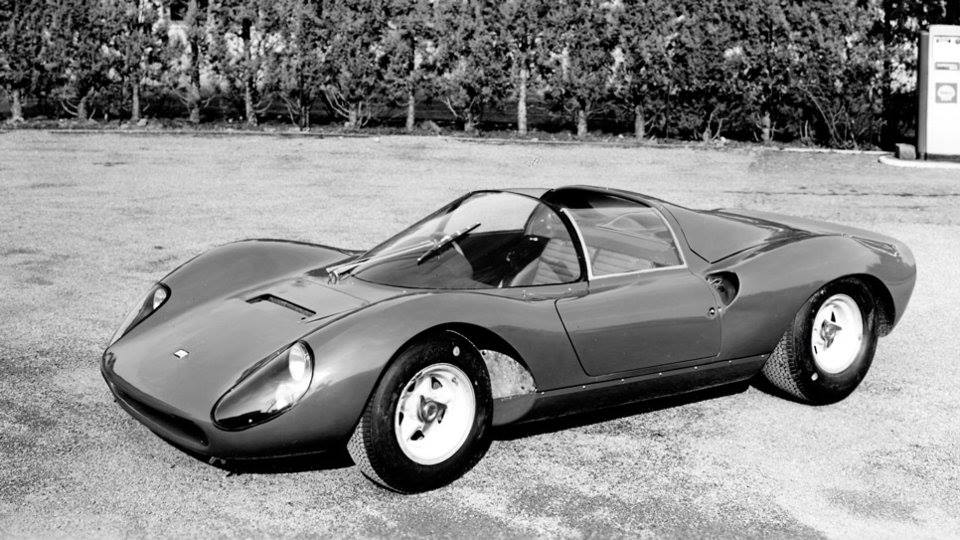
Based on the knowledge obtained in the development of the 231, a new sub-version of this engine was developed, this time by designer Stefano Jacoponi, another member of Forghieri’s development team. Despite maintaining the 2-liter configuration, the new engine, known as the 232, offered a substantial increase in power, jumping from the 215hp of the original 231 to impressive 280hp. Such boost in power came at a price, with the engine showing a propensity to fail over any distance longer than a mountain climb – which had an average length of 14km (and something that permanently ruined the car’s functionality in long-term races).
Weighing just over 520 kilos, the prototype was presented in 1967, under the name Ferrari 1967 Sport 2000. It was up to Chris Amon to test the new car on the Modena track, with the first trials demonstrating the machine’s great potential; However, the diamond was still in a rough state, requiring more careful polishing. The rest of 1967 went by, and when the 1968 Championship began, Ferrari was still not in a position to debut its vehicle. This left the way open for Porsche (with its 909 Bergspyder model) to once again be crowned championship winners.
While Porsche was collecting victories in the mountains of Europe, Ferrari delved even deeper into the Sport 2000 testing program, seeking to further refine its machine for a possible entry in 1969. However, the big twist in Ferrari’s behavior with the project happened when Peter Schetty took on the role of official test pilot of the initiative. Schetty, an experienced hill climber, having driven Ford and Abarth cars, quickly adapted to the Ferrari and, from then on, the Sport 2000 entered its final stage of maturation. Schetty’s first step in his new role was to take the car to the track, carrying out a series of test runs at the Modena and Vallelunga circuits.
Peter soon identified some flaws and possible areas for improvement in the car, and Ferrari was quick to put the driver’s suggestions into practice: the 206P’s original large gas tank had been replaced by a smaller version, made especially for the new prototype. The bodywork had also undergone a complete overhaul, with Edmondo Casoli (an experienced designer of high-performance sports car bodies) proposing a new spyder-like design made entirely from fiberglass. Not even the mechanical side had escaped the team’s attention, with the Tipo 232 engine undergoing a deep revision, which made the machine gain some extra horsepower, and raising the maximum output to 295hp.
Finally, all the modifications allowed the car to reduce its total gross weight to a mark close to 500kg, presenting a weight-to-power ratio similar to that of the feared Porsche Bergspyder. It was undeniable that, after all these modifications were completed, the Ferrari of the end of 1968 bore almost no resemblance to the Sport 2000 of 1967. Therefore, the final step was to give the vehicle a definitive name.
As Ferrari has several conventions for naming its cars (which involve anything from engine displacement, cylinder displacement or even the combination of engine displacement and valves per cylinder), for the definite hill climb project it was decided to use the formula that involved the combination of engine displacement and cylinder count as the naming method. Thus, the Ferrari 212E Montagna was officially born: 2-liter 12-cylinder engine, with the “E Montagna” meaning “European Mountain” – the role the car was intended for.
At the beginning of 1969, everything was ready for Ferrari to finally enter as an official team in the European Hill Climb Championship. Schetty, after his excellent role as the car’s test driver, had been promoted to official pilot of the 212E for the season, with all the team’s hopes on the Swiss driver’s shoulders. It was time to see if 2 years of studies and development would finally pay off.
V COURSE DE CÔTE D’AMPUS: FRENCH HILL CLIMB CHAMPIONSHIP (ORGANIZED BY THE A.S.A.D.V.)
1969 began with great surprises, in addition to the announcement of Scuderia Ferrari’s participation in the European Hill Climb Championship. The big disappointment was on account of Porsche who, after years as the main power in the championship, had decided not to officially participate in the 1969 edition, trusting on privateers the task to disturb the Italian team’s path towards the title. According to reports at the time, Porsche was now seeking to focus mostly on endurance races, in particular, with the long awaited (and also costly) 917 project, which would make its debut in 1969.
Due to this situation, the team decided to end its activities in the European Hill Climb Championship, after winning 9 of the 12 titles contested since 1957. But this did not mean that Ferrari would have a peaceful life in the competition, as another constructor, Abarth, also emerged as a strong contender for the 1969 championship, with its 2000 model. The car had made its debut in 1968 and, after a season with reasonable results, it was expected that the model would have reached its perfect point of maturity at the beginning of 69.
Abarth was betting on two fronts to achieve general and class victories in the tournament. The first consisted in the construction of 2 special vehicles, which would be considered the manufacturer’s main efforts in the championship: the duo of Abarth SP Cuneo, composed by the SE013 of Johannes Ortner (the official Abarth works entry), and the semi-works SE014, which was sold to the Italian hill climb ace Lualdi Gabardi. The second path, more conventional, was the one that would be taken by the Abarth 2000 SE010 production car, which would flood hill climb races from 1969 onwards, when the vehicle was made eligible for the Group 4 rules.
With an effective date to come into force on April 1, 1969, Abarth had achieved the homologation of the SE010 after meeting the basic requirements to participate in this group; the most important of them being the construction of 25 cars of the model. By strictly following the requirements, the automaker could already count on a large contingent of cars by mid-1969, to face the sole 212E. In addition to the factory team itself (which would also sign up some drivers to drive cars in this category), Scuderia Brescia Corse, Scuderia Etna, Scuderia Nord-Ovest, as well as several other smaller privateers spread across Italy, Switzerland and Germany, would have the SE010 at the start of the European Hill Climb Championship, in May.
But with regards to Ferrari and Abarth’s actual performance for 1969, everything was mere assumption until the teams’ official presentation, which would take place in a hamlet just over 90 km west of Nice: Draguignan. Located in the heart of the French region of Provence-Alpes-Côte d’Azur, the village was at the foot of the Ampus massif, a place that was far from the more traditional centers of French hill climbing events, such as the Pyrenees. Even so, the event, which was on its 5th edition in 1969, had become a great sensation, attracting the biggest French names in this discipline of motorsport.
A novelty for the 1969 contest is that this would be the first event in Ampus open to foreign drivers, as in all previous editions, the Association Sportive Automobile de Draguignan-Verdon (A.S.A.D.V.) which sanctioned the race, had vetoed the participation of any driver who did not possessed a French motorsport license. But, seeing the growth of the race year after year – and the possibility of generating more profit with the presence of drivers from other countries, A.S.A.D.V gave in to the pressure, allowing any graduated driver to submit their registration for the race.
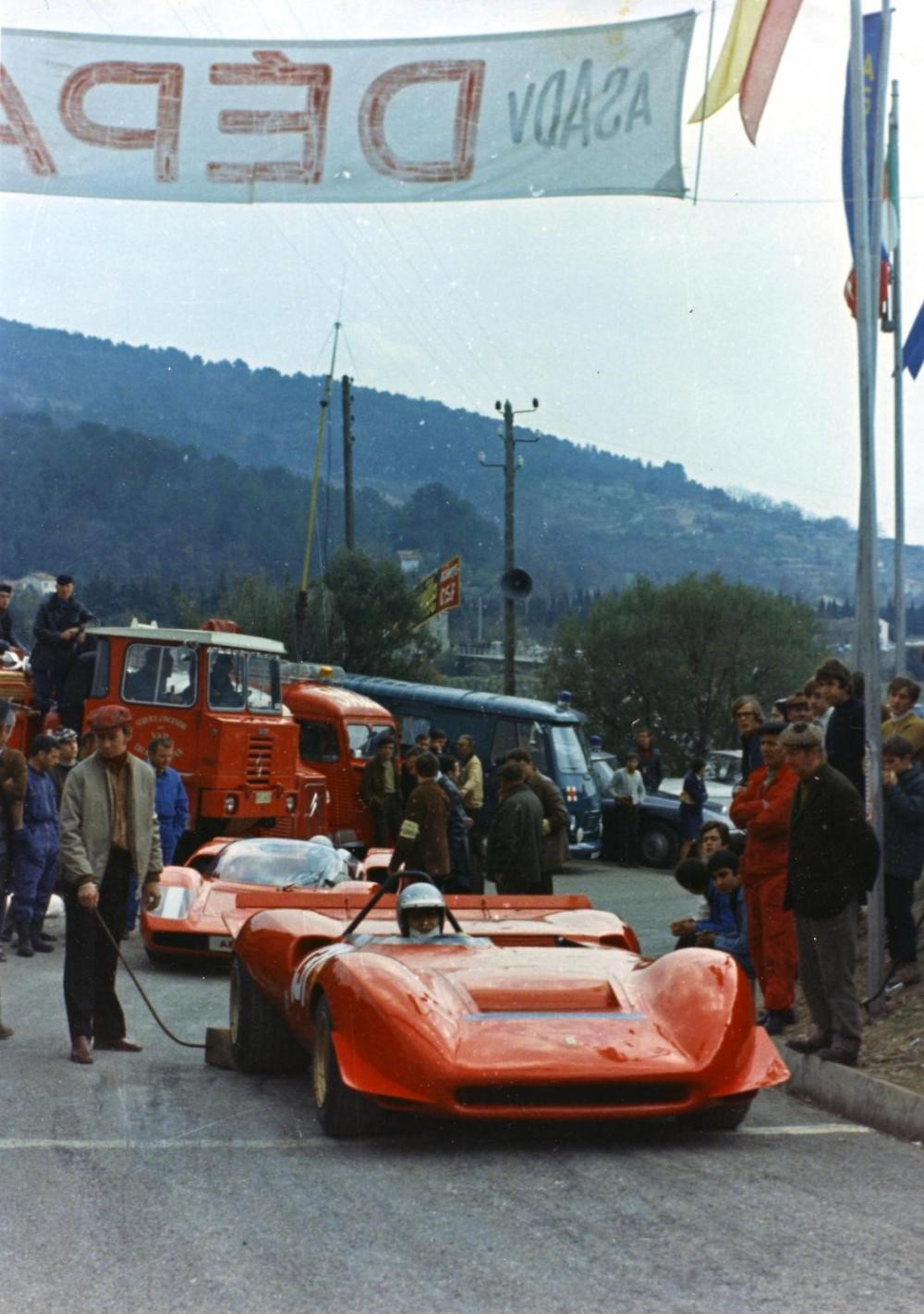
The route of the Ampus climb was 6,900 meters long and could easily be divided into two halves: the first, made up of tighter curves, would require maximum maneuverability from the cars, and where lost time could hardly be recovered. The second section, much faster, would require the drivers’ full attention, as the sides of the track offered no protection against any spin or loss of control. Ampus was well recognized for its hazardous and very narrow layout, while offering a dynamic and fluid climb.
The Ampus record belonged to Peter Schetty himself (with a mark of 4 minutes), achieved when the driver was still part of the Abarth team, at the beginning of 1968. Now, his former teammates became his rivals, with the Swiss aiming to repeat its success from the previous year. However, Schetty sought to reduce the pressure on himself and Ferrari, stating that Abarth, with its already tested equipment, was the favorite to win the race.
Peter Schetty was right to lower expectations on the 212E, as this would be the first time the car had been tested in real-world conditions. The Scuderia itself did not have great ambitions in this race, with the main objective being to check the integrity of all components before the start of the championship, in May. Furthermore, it would be the opportunity to see any changes that could be made, with the aim of further improving the vehicle before the official championship races.
The first free practice sessions on the Ampus hill climb began on Friday (28th), with French drivers being the majority in these activities. Abarth had carried out some tests during this day, while Ferrari, still finishing assembling its support structure, was forced to remain in the pits throughout the journey. On Saturday, the general picture had changed: Ferrari and Abarth entered the track for the first real practice sessions, with each driver having 4 opportunities to complete the climb in the shortest possible time.
On the Abarth & Co. side, the team’s two drivers in the race, Johannes Ortner and Giampiero Biscaldi, plus the ad-hoc pilot Edoardo Lualdi Gabardi, just tried to get the grip of the route, recognizing the challenges and opportunities of Ampus. However, this was not the case with Peter Schetty, who demanded a lot from Ferrari in almost all of his attempts – in one of them, the Swiss categorically stated that he had managed to lower his record, to 3m56s – but since these sessions were treated as training, there was no official timekeeping on site, which prevented confirmation of Schetty’s speech.
But the most important thing would be the times achieved on that cold and cloudy Sunday, the 30th. Each driver would only have 2 chances to set their best time, with the lowest overall mark declaring the winner of the fifth edition of the Course de Côte D’Ampus. The first heat started at 9:00am, with the predictions made previously being confirmed: Ortner’s Abarth was the fastest of the session, clocking a time of 4m09s7/10. Peter Schetty was second, 1 and a half seconds slower than Ortner, with the other Abarths coming soon after.
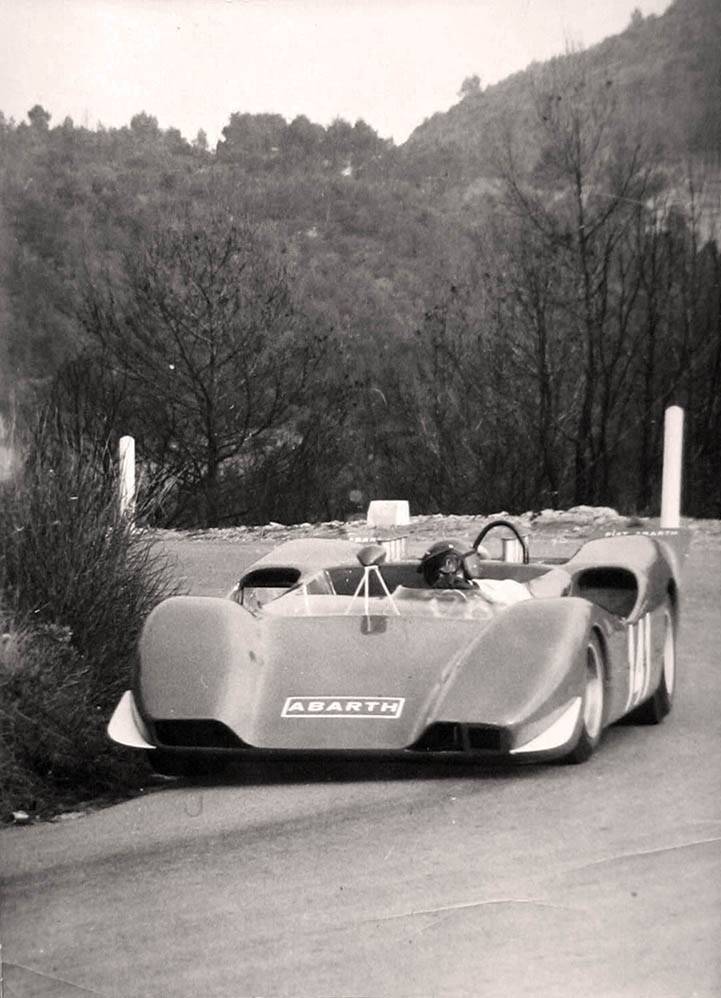
Schetty tried to justify himself, saying that the track was too dangerous for him to break his record on Sunday. According to him, the cold weather reduced traction, and latecomers and accidents also hindered Ferrari’s best development. However, the best defense Schetty could have would be to improve his performance in the second heat of the day, scheduled to start at 3:00pm.
First on the track were the Abarth cars, with Ortner substantially improving his time: the driver had set a time of 4m00s8/10, very close to Schetty’s record. Biscaldi was also improving his mark, who incredibly, after an engine change between the two heats, managed to reduce his morning time, from 4m24s5/10 to 4m11s3/10 – positioning the driver with the second-best time in the general classification. The one who wasn’t very lucky in the second heat was Lualdi, who had a tire puncture just 200 meters ahead of the starting line.
Now the moment of truth had come for Peter Schetty and the Ferrari 212E. Right at the start, things didn’t seem very well for the duo, with the car suffering an electrical ignition failure. Picking up the pace, the Ferrari began to accelerate through the tortuous first sector of the climb. The Swiss made up for lost time quickly, and, in the intermediate session, Schetty already saw the real possibility of breaking his record. Despite the Ferrari’s large rear width (which exceeded more than 2 meters), which hindered Schetty in the tightest parts of the circuit, both continued at a spectacular pace towards the Ampus peak.
And, after 3m56s7/10 of an electrifying climb, the Swiss crossed the finish line, thus guaranteeing the first victory for the Ferrari 212E in 1969. The spectacular performance of the car on the second climb had aroused praise even from the competition itself, which now saw Ferrari as the main favorite for the 1969 European Hill Climb Championship title. The victory in Ampus could be the first for the Schetty/212E duo – and certainly wouldn’t be the last.
VI COPPA CITTÀ DI VOLTERRA: ITALIAN HILLCLIMB CHAMPIONSHIP (ORGANIZED BY THE A.C.I.)
Continuing with the pre-season tests, Scuderia Ferrari decided to enter Peter Schetty and the 212e in another small national event. This time, the team would race in its own home country, taking part in one of the stages of the Italian Hill Climb Championship, organized by the Automobile Club d’Italia. The destination was the small town of Volterra, located in the Tuscany region.
Despite officially being in its sixth edition, the races in the Volterra region were much older than the numbering could possibly indicate. Between 1953 and 1954 hill climbing races had been held in the site under the banner “Coppa Comandante Braccini” and which would serve as inspiration, just under a decade later, for the Coppa Città di Volterra. The route remained practically unchanged since the first edition, still with the original name, with the stretch of road between the city of Volterra and the small village of Saline being the stage for the competition. There were 10,150 meters of pure speed, with an amplitude of 550 meters between the lowest and highest points of the route.
Peter Schetty already had a history at the site, with victory in the 1968 edition slipping through the Swiss’ fingers – Schetty was just a tenth behind the winner, his teammate at the time, Johannes Ortner. The driver did not want to repeat the plot of the previous edition and immediately tried to prepare for the second round of the confrontation between Ferrari and Abarth, which was scheduled to take place on May 11th. However, a few days before the race, the news came: the official Abarth team had decided not to participate in the event, with the aim of focusing on the final preparations for the European championship.
This decision left Ferrari’s path to victory in Volterra open. The only obstacle that could stand in Schetty’s way was the Italian driver Domenico Scola, in the only Abarth 2000 SE010 entered in the race. Furthermore, almost all other vehicles were equipped with engines of up to 1000cc, including Abarth and ATS type 1000. In any case, the underpowered Abarths were no longer cars on par with the Ferrari, with each new race meaning that Ferrari would come closer to the tune of the 212E.
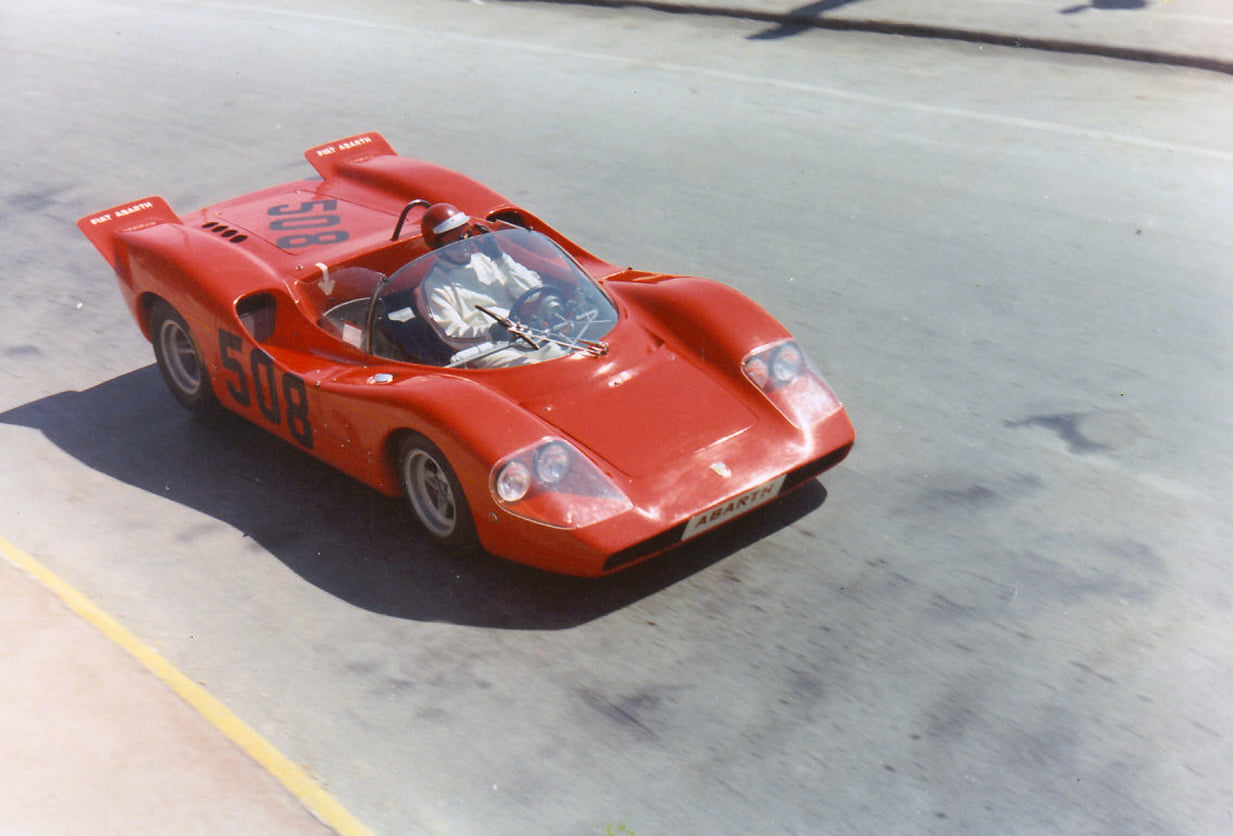
Peter Schetty and Ferrari demonstrated that they were not messing around that weekend, with the Swiss being arguably the fastest driver on the track in almost every session, whether in training or in the race itself. Schetty confirmed his favoritism by taking the victory and substantially reducing the track record, achieved the previous year by Ortner. The original mark of 5m17s8/10 had fallen to 5m12s6/10 in 1969, with Peter once again demonstrating all the virtues that the new vehicle possessed.
Schetty’s performance was so extraordinary that Scola, second overall, had a 20-second time lag over the Ferrari. And the Swiss driver’s record is even more impressive when compared to the last car on the podium, Martini Romano’s ATS 1000 SP, which was 47 seconds behind on the final standings. Thus, Ferrari had achieved two undisputed victories in the two races held so far; the Scuderia really started the official legs of the 1969 European Hill Climb championship with great morale.



